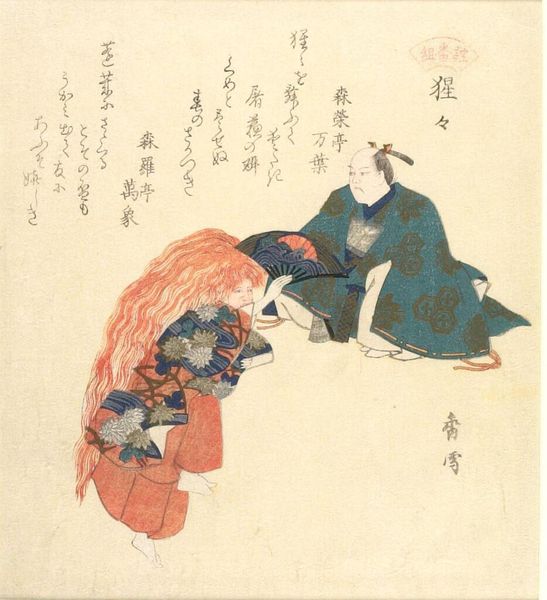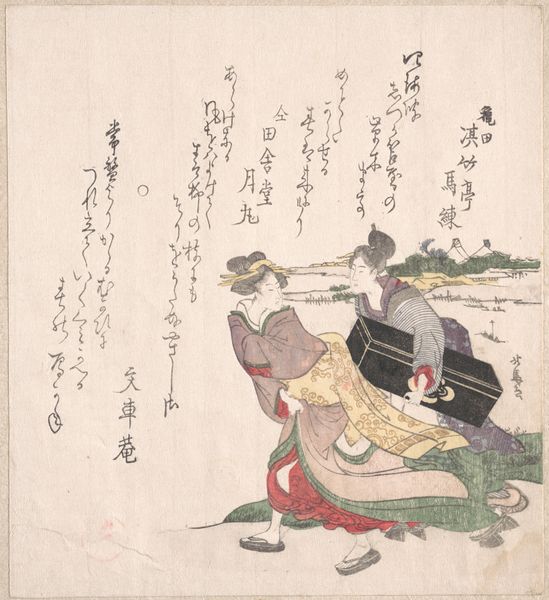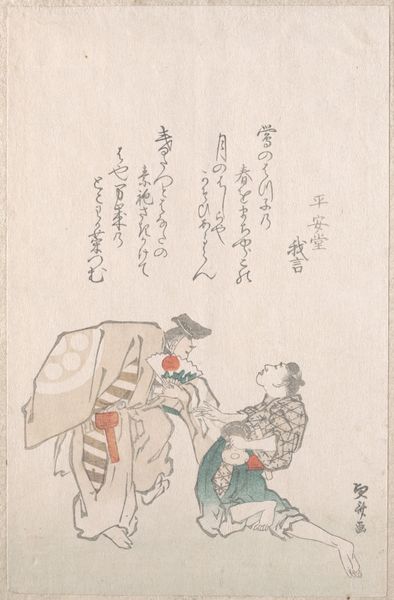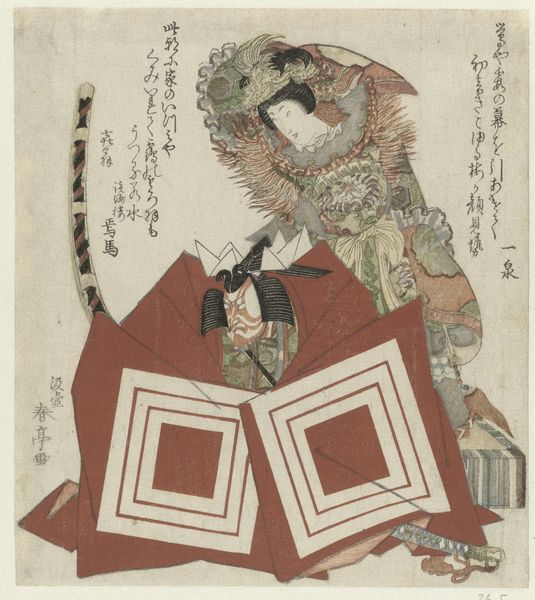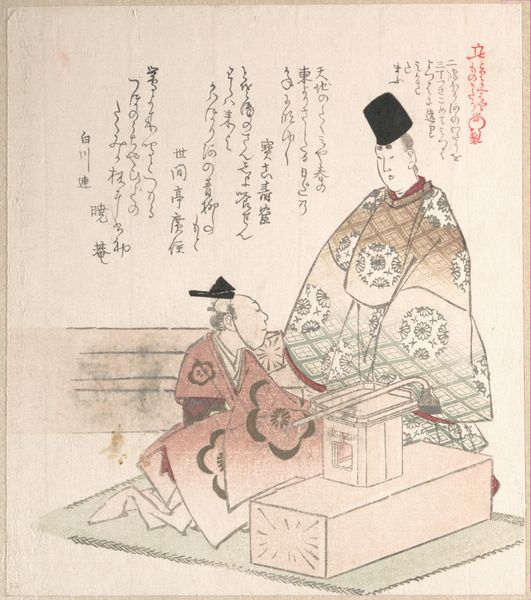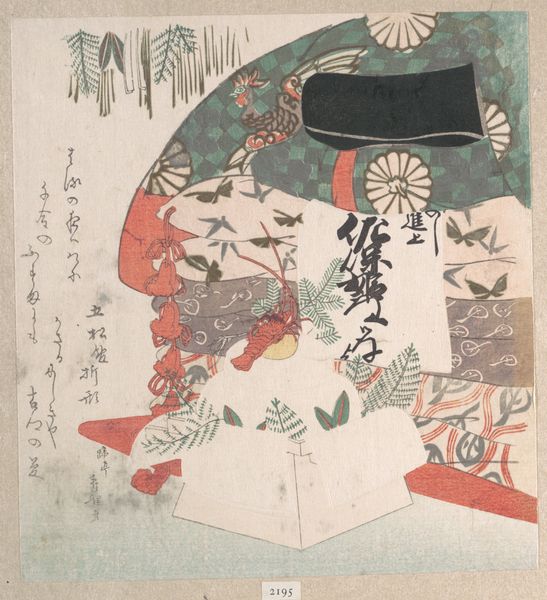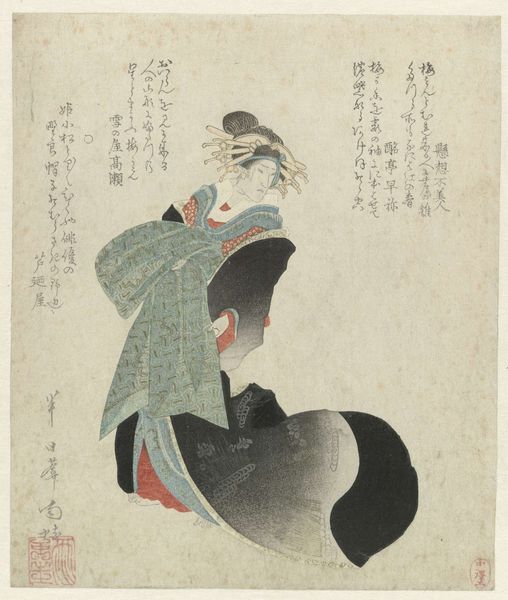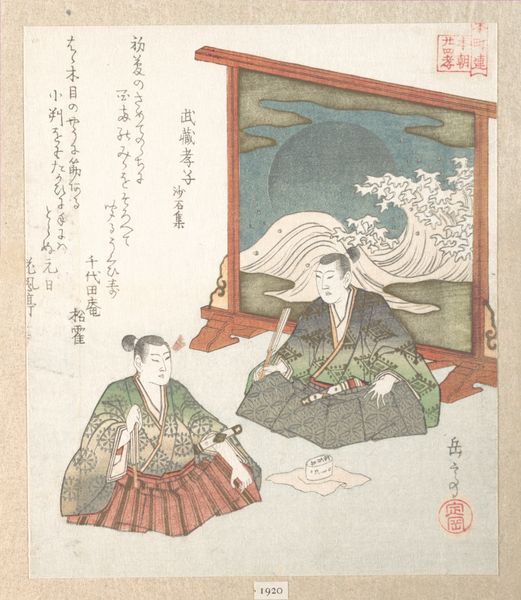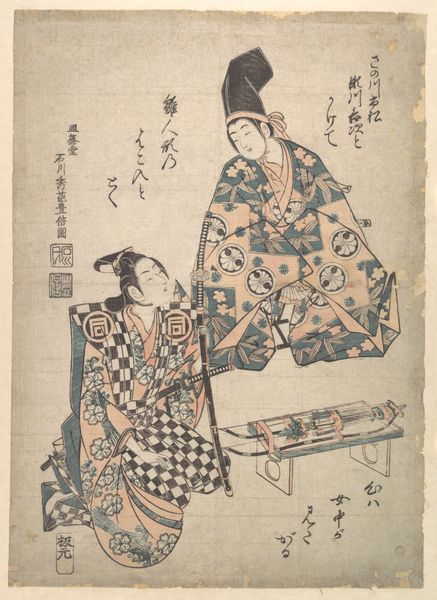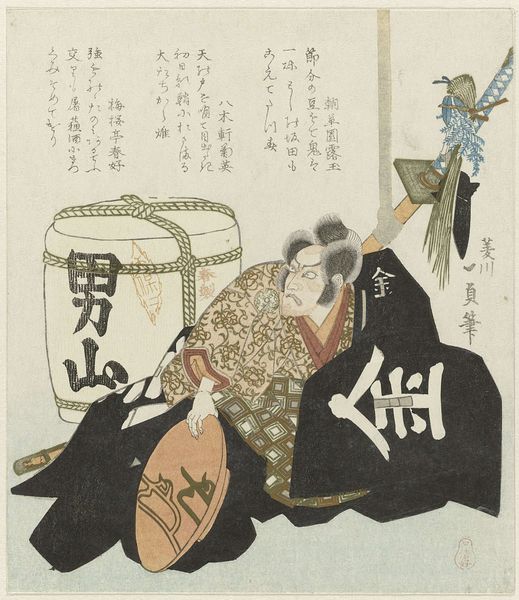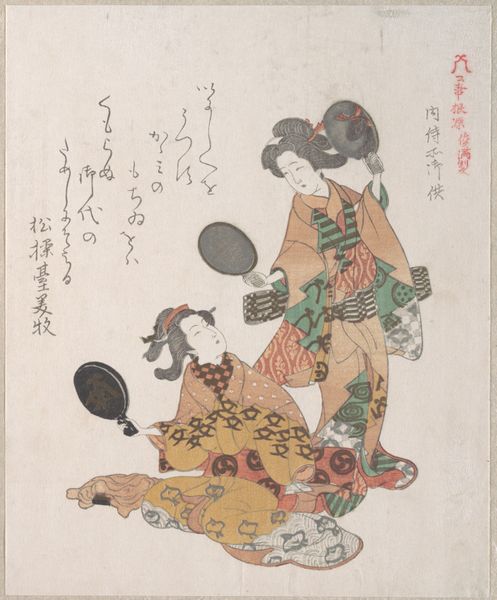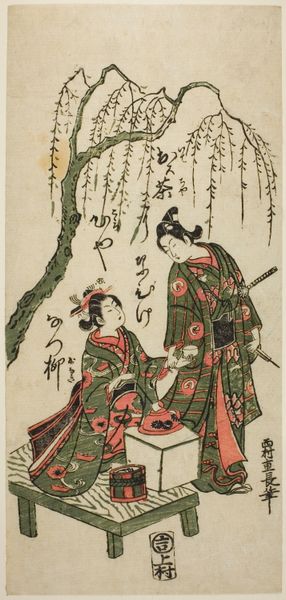
Scene from the Noh Dance "Shojo" 19th century
0:00
0:00
print, watercolor, woodblock-print
#
water colours
#
narrative-art
# print
#
asian-art
#
ukiyo-e
#
figuration
#
watercolor
#
woodblock-print
Dimensions: 8 1/4 x 7 3/8 in. (21 x 18.7 cm)
Copyright: Public Domain
Curator: Immediately, this print evokes a sense of controlled exuberance. The dancer's stance is dynamic, almost caught mid-leap. There's a vibrancy here, especially in the contrasting colors, that seems almost playful. Editor: Let's unpack this. What we’re looking at is a 19th-century woodblock print by Teisai Hokuba, titled "Scene from the Noh Dance 'Shojo'". It's part of the ukiyo-e tradition, which itself carries layers of socio-political meaning about Edo-period Japan. Curator: Absolutely. Knowing it’s ukiyo-e gives us a vital framework, but within that, what do we make of the Shojo figure itself? The wild hair, the theatrical robe – there's a coded performance of gender and perhaps class happening. Is he, through the noh play, satirizing some aspect of contemporary society? Editor: Noh was the theater of the elite. Hokuba, working within a more popular art form, ukiyo-e, appropriates this high art, which democratizes the scene but also potentially offers critique. The Shojo, a mythical sea spirit known for their love of sake, allows exploration of themes like ritual celebration or excess that reflect larger social anxieties or indulgences. Curator: I am curious about the materiality here. We are looking at watercolor applied to a woodblock print – two relatively accessible techniques used to disseminate this image on a wide scale. Editor: Precisely, these prints became a conduit of cultural discourse, extending the noh narrative beyond its exclusive confines and offering diverse audiences engagement and interpretations of these codified stories. It also highlights the role of print culture in the creation and spread of societal ideas. Curator: So, this deceptively simple image, with its energetic Shojo, reveals complex questions about art’s accessibility and the subtle ways performances of identity both reinforce and challenge societal norms. Editor: Indeed, it is through its narrative qualities that art offers not only historical but present discourse surrounding power dynamics, gender performativity, and artistic access within our cultural landscapes.
Comments
No comments
Be the first to comment and join the conversation on the ultimate creative platform.
